Getting Rid of Chemical and Carbon Waste from Batteries – A Maker’s Perspective
Posted on |
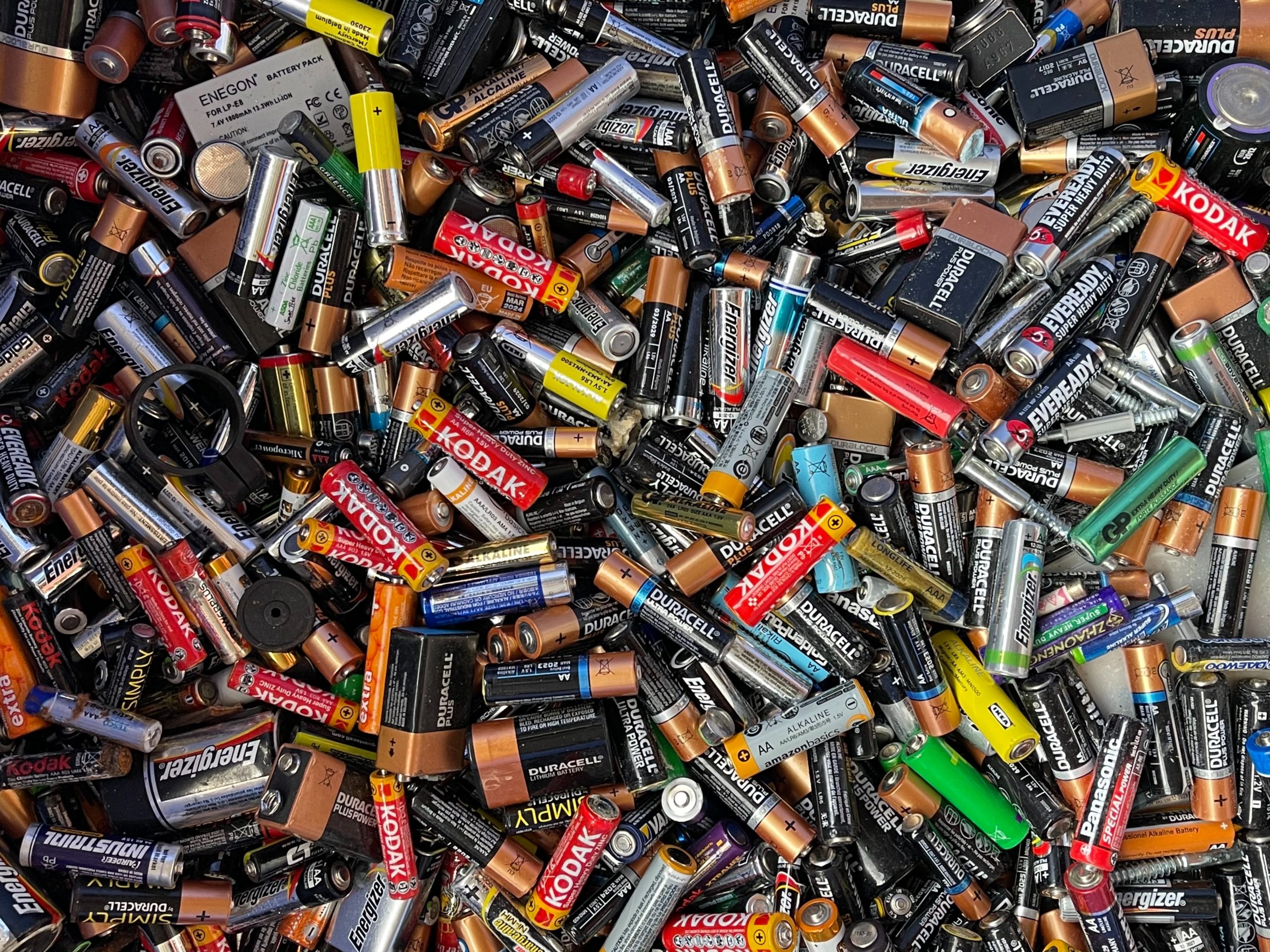
Many devices we use daily rely either on batteries that we need to replace more or less often. Beside the economical cost, this is a source of toxic waste. Using rechargeable batteries does not help much. Rechargeables are more expensive, and they eventually die and go to waste.
There are some possibilities to recycle batteries. Still, recycling is not 100% perfect. There is always waste generated. Besides nasty chemicals, CO2 is emitted by the recycling process, contributing to climate change. This adds up to wastes created during battery production. And if you take rechargeable batteries, the charging process efficiency is about 90%. This means that about 10% of the power used by the electric charger is lost.
In this article, I discuss how a maker can help address this issue. The solution is rather simple, though counter-intuitive. It allows to get rid of batteries for devices that does not require mobility. There are a lot of them in every home and office.
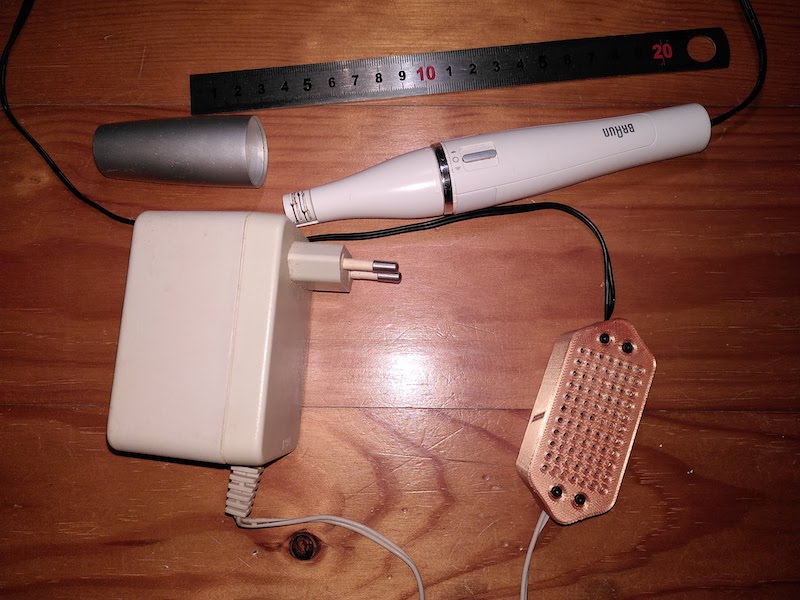
Add a Chord to Cut Batteries Waste at the Root
A more efficient solution is to avoid using batteries in the first place. Plug your devices to the mains whenever possible. Unfortunately, not all devices are equipped with an electric chord. This can be fixed easily through a rather simple DIY project.
Before diving into the details, a quick reminder. Since, we need to connect devices to the wall’s outlet, we need to be cautious, and know what we are doing. The voltage from the wall can kill a person. If you do not know what you are doing, please seek the help of a more experienced person.
Convert AC to DC
Batteries provide DC power, that is Direct Current. The voltage, measured in Volts (V for short), is stable and only decreases with the battery discharge. The mains provides AC electric power. AC stands for Alternating Current, since it value cycles up and down 50 to 60 times every second. That’s the 50 Hz or 60 Hz you can read on some devices. Hz stands for Hertz. 1 Hz is one cycle per second.
The voltage of AC power from the wall is rather high. It ranges between 110 Volts up to 230 Volts AC depending on the country. While most devices seldom require more than 20 Volts DC. For example, USB devices such as a smartphone require only 5V. And, many laptops requires 19.5 V.
Use the Right Power Adapter
The first step to replace batteries is to know how much DC voltage you need. The other information you need is the total power that is consumed by the device. It is measured in Watts (W for short). It is often written on the device. You can also find the information on the device’s manual.
The next step is to get an adapter that converts the AC electricity from the wall’s outlet to DC power required by your device. The right adapter should provide both the voltage (in V) and power (in W) from the previous step.
You can find all kinds of adapters on the market with different sizes, voltage, and power. However, I always prefer the recycling route. There are many broken devices, which adapters still work perfectly. Those are easy to find in your drawers. Again, just be careful to pick the one with the right voltage and power specs.
If your device has a connector for a power adapter, all you have to do is plug the adapter to the device, then to the wall. Et voilà! But, the adapter tip may not fit. The device might even not have a connector to plug into. Time for the maker to kick in and follow these steps:
- Cut the tip of the adapter’s wire that provides DC power
- Open the device’s enclosure
- Drill a hole on the device near the battery’s enclosure
- Pass the adapter’s wire through the hole
- Remove the insulator on the tip of the wires
- solder the wires from the adapter onto the device. Be careful to solder the + wire to the + side of the device. The – wire should go to – battery connector on the device.
- Close the device’s enclosure, and you’re ready to go 🙂
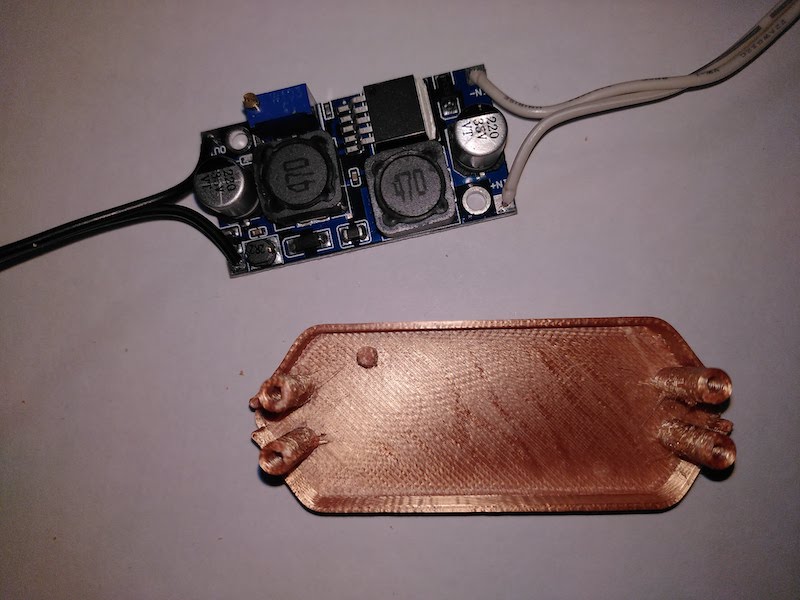
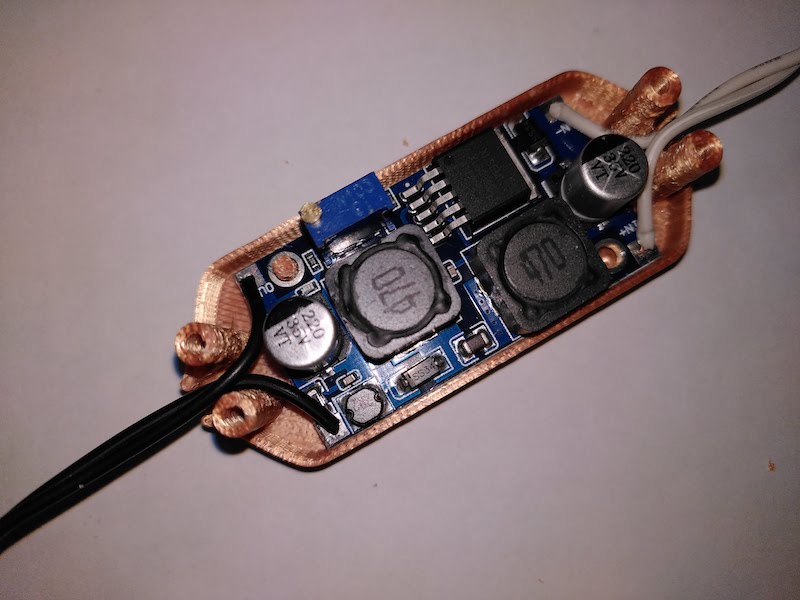
DC-DC Converters to the Rescue
Some devices may require special voltage. Sometimes, you just don’t have the right adapter. The solution is to use a DC to DC converter. It converts a DC voltage to another DC voltage.
There are 2 kinds of DC-DC converters. Buck converts, also called step-down converters output a voltage lower to the one they get. Boost converters, also known as step-up converters, do the opposite. Their output voltage is higher than the input voltage. There is also a third category: Buck-Boost converters. The work for both cases. The input voltage can be either higher or lower than the desired output voltage.
DC-DC converters are available as cheap small boards. They cost less than 1 Euro/ $1 for low power ones. The cheaper ones provide fixed voltage. I prefer to pay few cents more and get ones with a small potentiometer that allows adjusting the output voltage.
Once you have the right DC-DC converter, all left is to insert it between your power adapter and your device. If your converter is adjustable, you need to proceed in 3 steps.
- Solder the output wires of the power adapter to the input pads of the DC-DC converter. Be careful with polarity. Connect + to + and – to -.
- Adjust the output voltage by rotating the potentiometer. You need a voltmeter to measure the output voltage.
- Solder the output pads of the converter to wires that go to your device. Ensure that you have the right polarity here too.
Don’t forget to unplug the power before soldering!
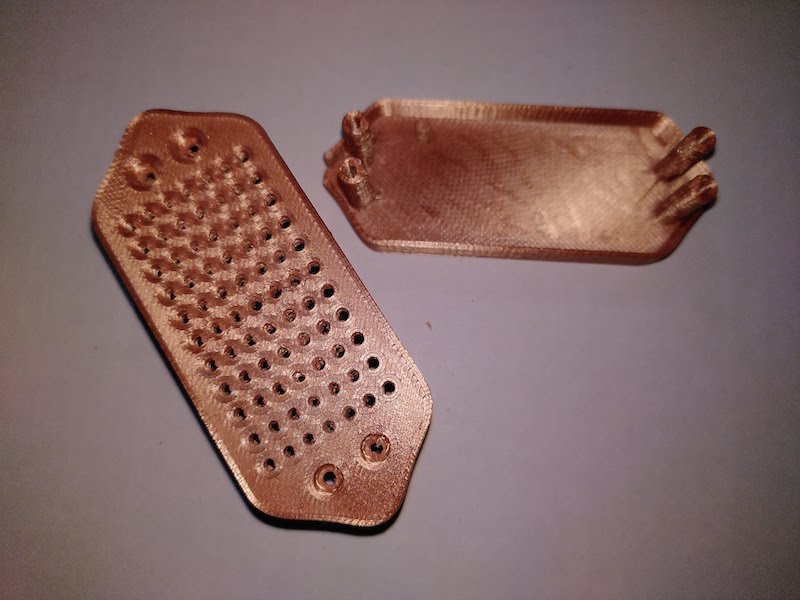
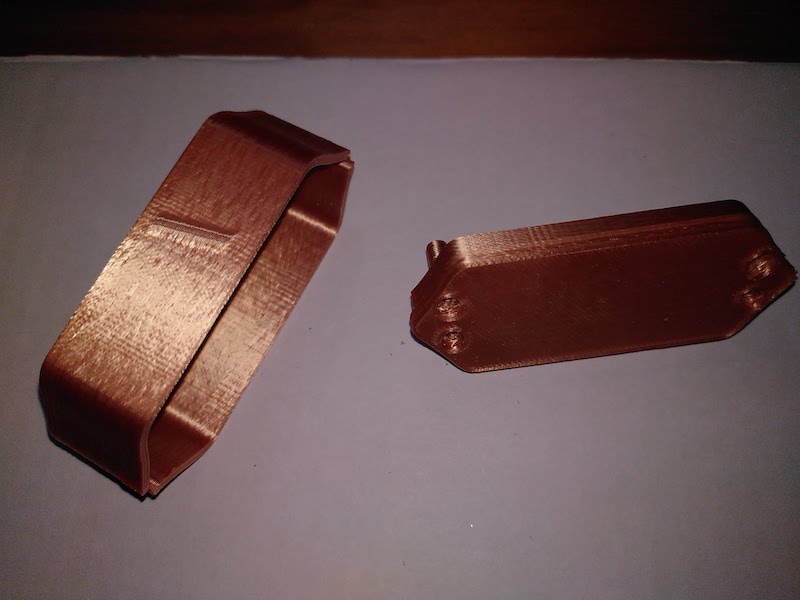

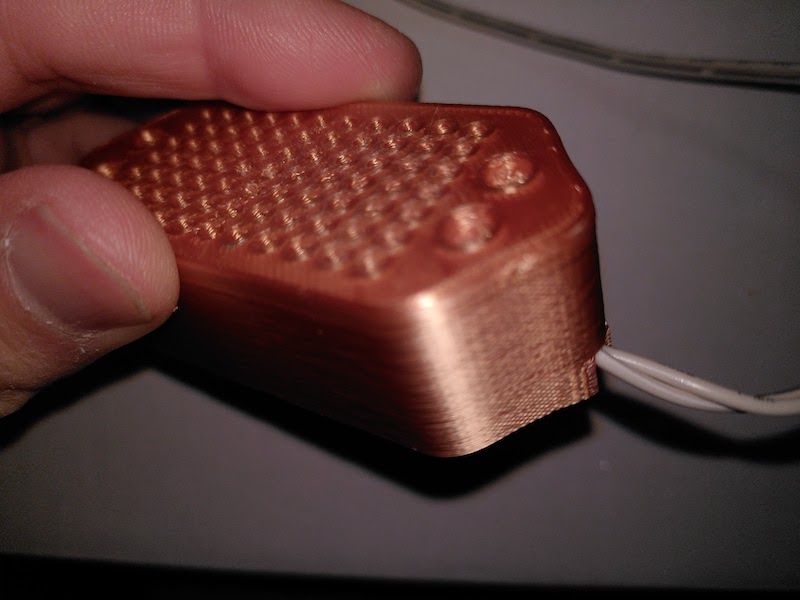
3D Printed Enclosure for the Converter
To finish up, all left is to put the converter inside an enclosure. For this, I made a 3D printed model. Files are freely available online. Printing can be done with plain PLA, with no supports.
The enclosure is made of two part that can be screwed together using 4 M2-20 screws. I tried different options, but got the best results without nuts. The screws inserted from the top adhere to the plastic of the bottom part.
The top part has many holes to allow the heat out. Note however that this design is meant only for low power devices. The low melting point of PLA make it unsuitable of high power devices, that produce too much heat.
Final Thought and Future Improvements
There are different possible improvements of the 3D printed enclosure. One of them is to glue the enclosure of converter on top of the power adapter. But, you need to take into consideration the heat produced by the adapter.
Increasing the size of the converter’s enclosure is yet another possible improvement. The height could be increased to allow adding a heat sink on the converter’s components, to support high power devices. It is likely that extra vents would be required to improve air circulation.
I hope that this post will inspire you to reduce your battery consumption. I’ve used this idea it in many devices. All of them rely on scavenged power adapters. So, it reduces waste even more. Just tell your friends and relatives that you recycle old adapters, and they will collect them for you. You’ll quickly end up with a stock where you can find the right adapter to power your devices, and cut off battery waste.
This site uses Akismet to reduce spam. Learn how your comment data is processed.

Leave a Reply